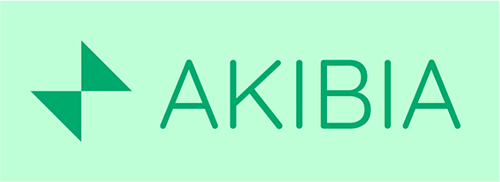[ad_1]
Teamwork’s fast factsPricing: Paid plans start at $5.99 per month per user, billed annually. Key features:
See if Teamwork is right for you by trying out its 30-day free trial. |
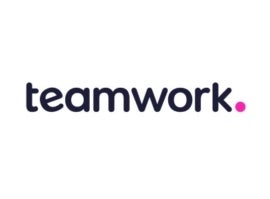
Teamwork lives up to its name as a project management software designed with team management top of mind. Considered one of the top project management solutions, Teamwork offers a deep range of features that compete with the best in the market, from facilitating collaboration to workload management to real-time project status tracking.
Teamwork’s time tracking capability gives project leaders robust visibility into team member tasks, expected versus actual progress and billable work hours.
Of course, there are other project management tools available, and if Teamwork isn’t the right fit for your organization, we encourage you to explore other options to find the one that best meets your needs.
SEE: Use this project manager hiring kit to find the right person to lead your project teams.
Jump to:
Featured project management software
Pricing
Teamwork offers one free tier and four paid tiers. The best plan for your organizations will depend on various factors, including number of users and required features.
Free Forever
Although the Free Forever plan is limited in terms of features and the number of projects it can manage, it’s best for budget-conscious individuals or small teams of up to five members. With this plan, users have limited project power and 100MB of storage.
That said, Teamwork’s free plan provides access to some essential features needed to manage their team and client’s work. These features include tasklist templates, two project templates, full-time tracking and basic integrations with Slack, Microsoft Teams and Google Workspace.
Starter
The Starter plan is ideal for those looking for basic project management features. It costs $5.99 per user per month when billed annually or $8.99 per user per month when billed monthly. With this plan, teams have access to 10 project templates, 500 automation actions per month and up to 50GB of storage.
Teamwork’s Starter plan does lack some key features like team management, client users, project budget expenses and reporting capabilities. Teams looking for these additional features should consider the other higher-tier plans.
Deliver
The Deliver plan costs $9.99 per user per month when billed annually and $13.99 per user per month when billed monthly. It includes some of the features lacking in the Starter plan, such as team management, project status reports. and unlimited client users.
The Deliver plan also allows users to run up to 300 projects and increases the storage limit to 100GB. Project leaders can even take advantage of portfolio health reports as well as planned versus actual reports.
Grow
For fast-growing teams with complex project management needs, the Grow plan costs $19.99 per user per month when billed annually or $25.99 per user per month when billed monthly. It includes workload and capacity management, advanced budgeting and resource scheduling as well as an increased storage limit of 250GB.
With this plan, organizations can personalize Teamwork by adding their custom branding and getting a custom domain with SSL.
Scale
Featuring unlimited project templates, custom fields, 10,000 automation actions per month, unlimited tasklist budgets and retainer management, and over 500GB storage, Teamwork’s Scale plan is designed for large enterprises.
Teamwork doesn’t advertise the cost of this plan on its website, prospective buyers should contact the sales team for custom quotes.
Key features of Teamwork
Utilize multiple project views
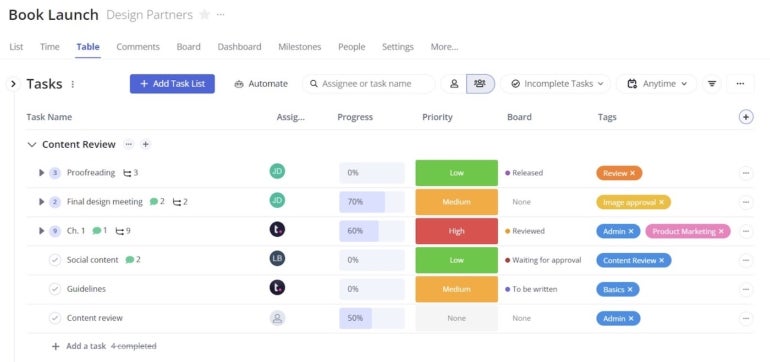
Teamwork project views allow teams to view their projects in a way that makes the most sense to them. Teamwork offers four different project views: List, Table, Boards and Gantt.
These different views enable teams to choose the view that works best for their specific project and team, making it easier to manage and track progress. This flexibility allows for better communication and collaboration among team members, as everyone can easily understand the status of tasks and projects.
Import existing project data
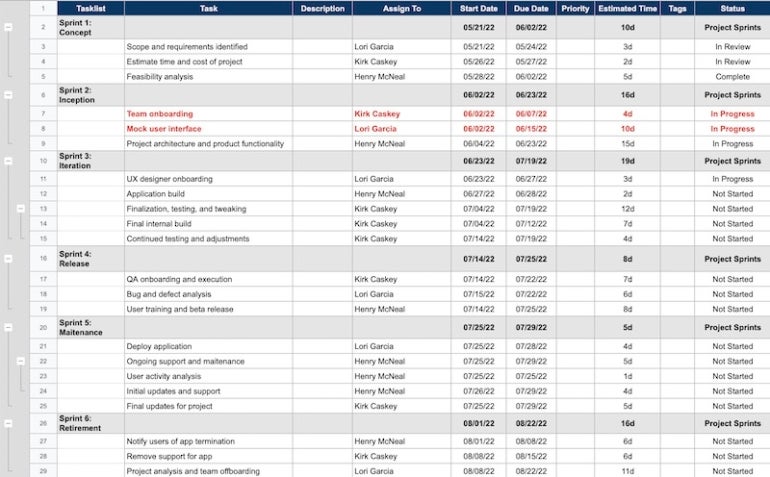
Teamwork allows users to import existing project data into the platform. This feature is particularly useful for teams migrating from another project management software or those who want to bring in historical data from previous projects.
Teamwork supports importing data from various sources, including CSV files and third-party applications like Trello and Asana. This means that teams can easily migrate their project data from these platforms to Teamwork without having to start from scratch.
Collect and visualize data and collaborate across project perspectives
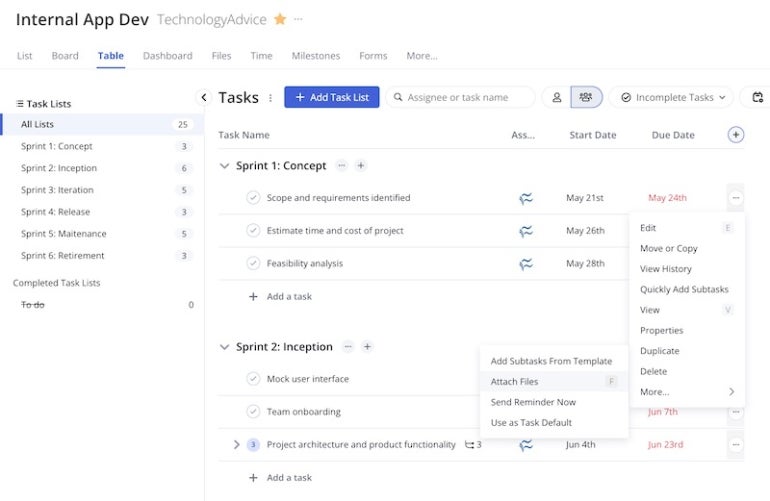
The first view of imported project data is the familiar, spreadsheet-like Table view. This view groups tasks into sprints, and each task (row) contains values according to the imported fields.
While users can choose from 16 built-in column values, the option to Add Custom Field limits users to five value types: text, number, date, status and dropdown. This is a good selection, but other platforms offer more flexibility by offering unique field values.
For rows, users can drag and drop tasks between sections (sprints), open the task’s details or mark the task complete via the checkmark. From the task profile, teams can create subtasks and dependencies or add comments and files for collaboration purposes.
Time tracking: Measure every second
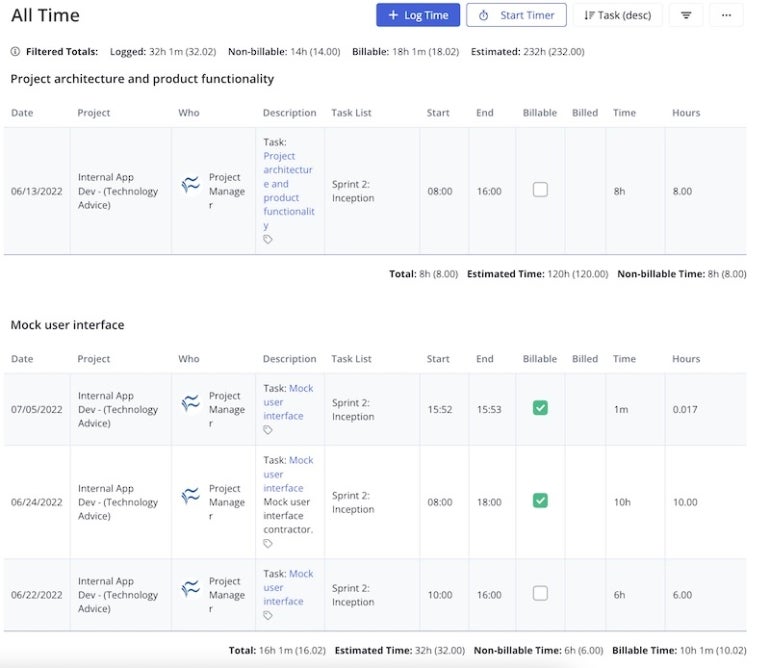
The time tracking feature is a righteous feature for managers working with contractors and teams trying to record, analyze and optimize time-driven tasks. The Time Tracking engine allows users to set task metadata like expected hours, a description and whether it’s billable.
After adding times for one or a series of tasks, users can return to their All Time page, which features any time entries under their associated project task. Teamwork also offers helpful totals of logged, non-billable, billable and estimated hours.
Visualize and share project reports

Through the Reports button, users can view overall project health, utilization metrics and how planned tasks stand up to their deadlines and actual completion date:
- The Project Health tab offers a comprehensive look at how multiple projects fare
- The Utilization tab breaks down expected and actual effort between team members.
- The Planned vs. Actual tab is similar to the Table view, with select columns displaying differences between deadlines and completion dates.
All of these views can be exported into a PDF, Excel or CSV, allowing teams to take Teamwork data offline or share it with stakeholders in a universally accessible format.
Establish a communication medium
By enabling Teamwork Chat, teams can start using the platform’s instant messaging service. With a familiar feel to Slack or Microsoft Teams, the Chat app offers teams a separate platform app for team communications. From the Chat homepage, users can create new channels for groups of users, share files or try Teamwork’s beta video conferencing feature.
Teamwork integrations
Teamwork integrations enable teams to work seamlessly across various applications and services without switching between them manually. It also allows for more efficient collaboration and information sharing between team members. Teamwork enables organizations to connect with over 350 third-party services across different categories, including:
- Gmail: Integrating Gmail with Teamwork allows users to automatically create tasks in Teamwork from upcoming emails, forms or other triggers.
- HubSpot: Integration with sales and marketing tools like HubSpot enable managers to create projects, tasks, messages and milestones in Teamwork directly from HubSpot.
- Easy Insight: With connectors like Easy Insight, users can create custom reports from projects, milestones, time tracking, tickets and deals in Teamwork.
- Quickbooks: Integration with accounting solutions like Quickbooks allows users to export invoices from Teamwork into their accounting system.
- Data Viewer: Teamwork’s integration with developer tools like Data Viewer displays JSON data from an external source.
Pros and cons
| Pros | Cons |
|---|---|
|
Modifications can take a few moments to change before becoming visible. Some platform processes require additional learning and could be more intuitive. Edit user notification settings or get ready for a barrage of emails. |
Teamwork video review
If Teamwork isn’t ideal for you, check out these alternatives
We compared the top three Teamwork alternatives to help you determine the best project management tool for your organization.
| Feature | Teamwork | Asana | ClickUp | Trello |
|---|---|---|---|---|
| Resource management | Yes | Yes | Yes | Limited |
| Gantt | Yes | Yes | Yes | No |
| Kanban board | Yes | Yes | Yes | Yes |
| Time tracking | Yes | Yes | Yes | Yes |
| Integrations | Yes | Yes | Yes | Yes |
| Free plan | Yes | Yes | Yes | Yes |
| Starting price (billed annually) | $5.99 per user per month | $10.99 per user per month | $5 per user per month | $5 per user per month |
Asana
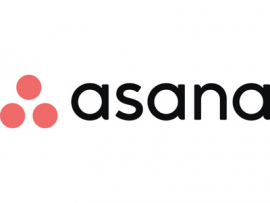
Asana is a web and mobile-based software application that helps teams manage tasks and projects. With Asana, project leaders can create tasks, assign them to team members, set due dates and track progress. It also includes features like project timelines, calendars and collaboration tools, such as commenting and file sharing. Asana is used by teams of all sizes across various industries, including marketing, design, engineering and more.
Those looking to get started with project management fare best with Asana due to its extensive list of templates. Asana is useful for managing complex projects, and its workload feature can help prevent team burnout by allowing managers to set limits on their workloads.
For more information, check out our full Asana review.
ClickUp
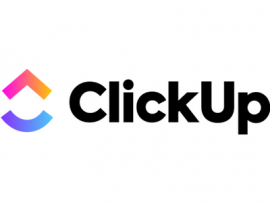
ClickUp has become one of the fastest-growing project management tools on the market, with users across various industries, including software development, marketing and education. The project management tool helps teams to manage tasks, projects and workflows. Featuring task management, project management, team collaboration, time tracking and goal setting, ClickUp aims to increase team productivity by providing a centralized platform where all team members can work together and stay on top of their tasks and projects.
ClickUp offers more customization than Teamwork, it can be customized to suit almost any use case. With over 15 views, users can easily switch between different views depending on their preferences and the task at hand. ClickUp is also more affordable than Teamwork.
For more information, check out our full ClickUp review.
Trello
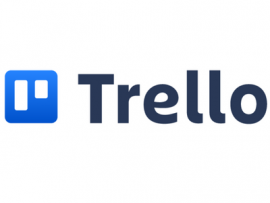
Trello is a web-based, kanban-style, lists and card-based project management tool used by small teams to organize and manage their projects. The tool has a simple and intuitive user interface that allows teams to create, organize and prioritize tasks easily. Users can create boards for different projects, add lists to each board and then create cards for each task within those lists.
Trello is an easy to use alternative to Teamwork. It’s ideal for individuals and small businesses who need simple project management.
For more information, check out our full Trello review.
Review methodology
This review is based on our experience registering, configuring and executing a project in Teamwork. We gathered data from various sources, including review sites like G2, TrustRadius and Gartner Peer Insights. We also reviewed the vendor’s website for product documentation, pricing, feature lists and available use cases. Additionally, we considered the feedback of existing Teamwork users, evaluating their experiences with the software and their overall satisfaction with the product.
Who is Teamwork best for?
Teamwork is a versatile project management software that is suitable for businesses of all sizes, from small startups to large enterprises. However, it is particularly well-suited for agencies, distributed and location-independent teams, professional services and creative teams that are growing and scaling.
Looking for a tool for your creative team? Check out our list of the top creative project management software.
[ad_2]
